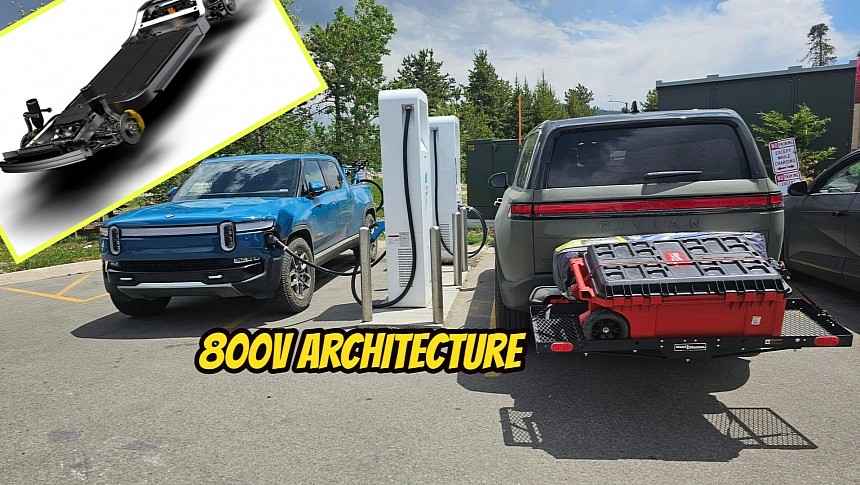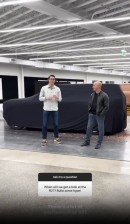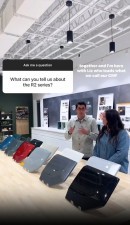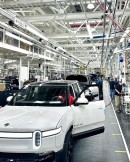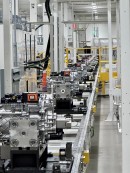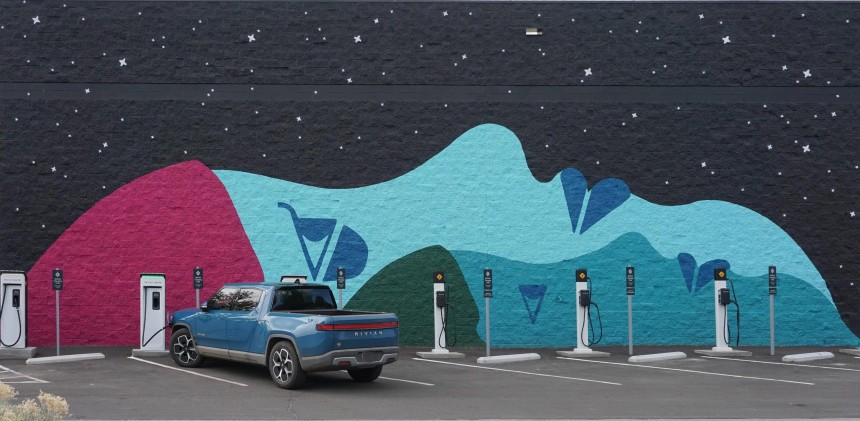In today's all-electric car market, Rivian holds an important place. It's rightfully characterized as the next Tesla, but better. Thus, it's not surprising that customers love their zero-tailpipe emission pickup trucks and SUVs. However, the future might not look so good for early adopters. Here's why.
Amid ramping up and streamlining production, Rivian is also trying its best to keep in touch with customers, investors, and EV enthusiasts. Moreover, the young company is in the process of building its Georgia plant, where the R2-series units are scheduled to be manufactured.
But besides all that, Rivian is also trying to advance its current offerings. One great example in this regard is the 800V architecture. Currently, the R1-series vehicles are manufactured with half the voltage – 400V.
Rivian confirmed it's working on battery packs with double the voltage that will include an integrated on-board charger, a DC to DC converter, and a DC to AC converter, "where the power stages of the DC-AC and AC-DC are bi-directional and share semiconductors, magnetics, and the controller."
That's in line with what has been recently shared in the Q2 earnings call. The startup is streamlining production and making sure profit margins won't still be affected by losses because it simply can't raise prices in a slowing and very competitive car market.
According to the official input on the brand's dedicated Reddit group, the 800V architecture will be introduced with the R2-series vehicles. The existing R1T and R1S won't benefit from this upgrade, nor will they be able to support it in the future.
The 800V architecture is a great way to enable higher charging speeds and cut down on heavy wiring. The Porsche Taycan and Hyundai Ioniq 6 have their battery packs built around this higher voltage, allowing them to take advantage of high-power chargers that can dispense electrons at a rate of 350 kW.
Essentially, doubling the voltage allows for halving the amperage without increasing the wattage. One big problem for EVs today is heat management. Much electricity is being wasted just to keep things at the right temperature. That includes chargers, cabling, and battery packs. Increasing the amperage translates into equally increased resistance that causes heat and leads to throttling. That's how charging doesn't happen as fast as the driver may expect.
An EV boasting the 800V architecture would charge at a 200 kW stall at 250 amps, whereas one like the Rivian R1T and R1S would require 500 amps. That doesn't only create too much heat, but it can also lead to accelerated wear. The automaker currently allows its two vehicles equipped with the large battery pack to reach 220 kW temporarily.
Not being able to add the 800V architecture to the R1S and R1T when it becomes available for the R2-series is a letdown for the secondary market value of these already iconic American EVs. People will desire faster charging speeds, optimized batteries, smarter accessories, and lightweight components.
Moreover, Rivian signed the NACS agreement despite having its own Level 1 and Level 2 charging networks. The Tesla connector will be installed on the automaker's vehicles starting in 2025. That will likely become another reason for used R1T and R1S to be available at discounted prices. Some will be able to connect directly to a Supercharger, while others with older models will require an adapter.
Short-term, the 400V architecture is more than enough to satisfy nearly everyone's locally clean mobility needs. If you're looking forward to owning a Rivian boasting the 800V architecture, you might have to wait at least three more years.
But besides all that, Rivian is also trying to advance its current offerings. One great example in this regard is the 800V architecture. Currently, the R1-series vehicles are manufactured with half the voltage – 400V.
Rivian confirmed it's working on battery packs with double the voltage that will include an integrated on-board charger, a DC to DC converter, and a DC to AC converter, "where the power stages of the DC-AC and AC-DC are bi-directional and share semiconductors, magnetics, and the controller."
That's in line with what has been recently shared in the Q2 earnings call. The startup is streamlining production and making sure profit margins won't still be affected by losses because it simply can't raise prices in a slowing and very competitive car market.
According to the official input on the brand's dedicated Reddit group, the 800V architecture will be introduced with the R2-series vehicles. The existing R1T and R1S won't benefit from this upgrade, nor will they be able to support it in the future.
The 800V architecture is a great way to enable higher charging speeds and cut down on heavy wiring. The Porsche Taycan and Hyundai Ioniq 6 have their battery packs built around this higher voltage, allowing them to take advantage of high-power chargers that can dispense electrons at a rate of 350 kW.
Essentially, doubling the voltage allows for halving the amperage without increasing the wattage. One big problem for EVs today is heat management. Much electricity is being wasted just to keep things at the right temperature. That includes chargers, cabling, and battery packs. Increasing the amperage translates into equally increased resistance that causes heat and leads to throttling. That's how charging doesn't happen as fast as the driver may expect.
Not being able to add the 800V architecture to the R1S and R1T when it becomes available for the R2-series is a letdown for the secondary market value of these already iconic American EVs. People will desire faster charging speeds, optimized batteries, smarter accessories, and lightweight components.
Moreover, Rivian signed the NACS agreement despite having its own Level 1 and Level 2 charging networks. The Tesla connector will be installed on the automaker's vehicles starting in 2025. That will likely become another reason for used R1T and R1S to be available at discounted prices. Some will be able to connect directly to a Supercharger, while others with older models will require an adapter.
Short-term, the 400V architecture is more than enough to satisfy nearly everyone's locally clean mobility needs. If you're looking forward to owning a Rivian boasting the 800V architecture, you might have to wait at least three more years.
